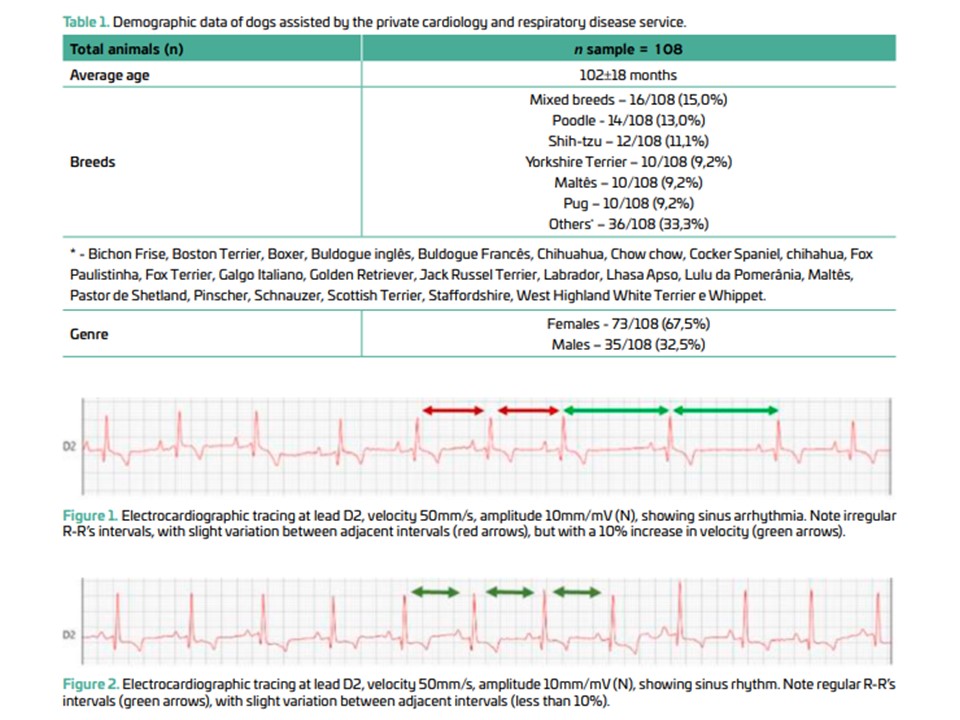Electrocardiographic findings in dogs with obstructive airway diseases
DOI:
https://doi.org/10.21708/avb.2022.16.2.10838Abstract
Cardiac rhythm disorders are diagnosed through electrocardiography, which is an important tool to investigate other systemic conditions that may be related to the cardiac conduction system. Cardiac regulation is controlled by the autonomic nervous system, and in dogs, it is mainly modulated by a parasympathetic action exerted by the vagus nerve, called vagal tone. Increased vagal tone can occur physiologically or pathologically, leading to the occurrence of bradyarrhythmias. However, some studies report that airway diseases can exacerbate this tone, together with the reduction of sympathetic pathway activities. This study aimed to analyze the cardiac rhythms in dogs presenting with electrocardiographic alterations related to respiratory diseases, in connection with the exacerbation of vagal tone. Medical records of animals whose diagnoses involved at least one respiratory condition and who underwent electrocardiographic assessment between March 2017 to March 2021 were compiled. Data obtained were compiled in Microsoft Excel® spreadsheets and evaluated using descriptive statistics through the BioEstat® software. Pearson’s correlation was used for quantitative data. A correlation between autonomic regulation and vagal exacerbation was observed in cases with obstructive airways diseases.
Downloads

Downloads
Published
Issue
Section
License
Copyright (c) 2022 Acta Veterinaria Brasilica

This work is licensed under a Creative Commons Attribution 4.0 International License.
Autores que publicam na Acta Veterinaria Brasilica concordam com os seguintes termos: a) Autores mantém os direitos autorais e concedem à revista o direito de primeira publicação, com o trabalho simultaneamente licenciado sob a Licença Creative Commons Attribution que permite o compartilhamento do trabalho com reconhecimento da autoria e publicação inicial nesta revista. b) Autores têm autorização para assumir contratos adicionais separadamente, para distribuição não-exclusiva da versão do trabalho publicada nesta revista (ex.: publicar em repositório institucional ou como capítulo de livro), com reconhecimento de autoria e publicação inicial nesta revista. c) Autores têm permissão e são estimulados a publicar e distribuir seu trabalho online (ex.: em repositórios institucionais ou na sua página pessoal) a qualquer ponto antes ou durante o processo editorial, já que isso pode gerar alterações produtivas, bem como aumentar o impacto e a citação do trabalho publicado (Veja O Efeito do Acesso Livre).


 Esta obra está licenciada com uma Licença
Esta obra está licenciada com uma Licença 